Just two days after the day trip to the Upper Galilee with my sister, I arrived on base and was told that I can have the day off. A tad dismayed that I had to travel two hours to get the news, I decided to salvage the day by going on a little adventure along the coast between Atlit and Caesarea – close by and chock-full of interesting sites. The first place I decided to visit was the Carmel Caves, part of a national park I’ve been wanting to see for years and one that I’ve passed by literally hundreds of times. I got a ride from a friend to Atlit Junction and then took a bus the rest of the way. When I reached the Nachal Me’arot (River of Caves) park I could already see the raw cliff sides over the banana fields.
I entered the park and inquired as to the length of the cave route. To my surprise, the lady behind the counter told me it would take about 45 minutes in total, maximum. To the base of the cliff chunk I went, looking up at this distant section of Mount Carmel. Essentially a large triangle jutting out into the Mediterranean Sea, Mount Carmel is a small mountain range containing several national parks including Nachal Me’arot which slices through the mountain. Climbing up the stairs to the caves, passing by a strange sign warning visitors not to linger on the steps, I reached the first cave, the Tanur Cave.
A tall, shallow cavern, the Tanur Cave has been excavated and marked off in levels of historical periods. Essentially a chimney cave (“tanur” meaning “oven” in Hebrew), early man settled within its confines to find shelter. The next cave, right beside the Tanur Cave, is the Gamal Cave. Named “camel” in Hebrew, this cave is bell-shaped and has been decorated with plastic cavemen and their few belongings. Outside the cave I noticed a rock with numerous fossils of invertebrates in a large chalky rock, alluding to the flooding presence of water in the region:
Continuing on along the cliff edge, I headed for the largest of the caves, the Nachal Cave. Here is looking back at the Gamal Cave:
Entering the Nachal Cave, a 70 metre (230 foot) long tunnel paved and lined with speleothems, better known as cave formation such as stalagmites and stalactites. An audio-only and then audio-visual show played within the cave and the colour theme for illuminating the cave was quite groovy. Here is a little section of cave wall lit up bright red:
At the far end of the cave, nearly cut off from the light of day, I sat down to watch the short projected film about the early humans living in the cave. The way they filmed the cavemen, the way the story unraveled reminded me of an interesting 80’s movie called Quest for Fire, a film adaptation of a Belgian novel about three cavemen who travel in search for fire. After the presentation I took this somewhat blurry photo of the way back through the cave – the groovy lights showing us the fascinating interior:
I think as far as caves in Israel go, my favourite is still the watery tunnel at Nachal Kziv. However, this cave delivered more in regards to stalagmites and stalactites. I have yet to see the Soreq Cave near Bet Guvrin… Upon leaving the Nachal Cave I crossed the dry stream-bed of which the park is named after and approached the opposite cliff wall – the “Finger” Cliff.
The “Finger” Cliff, as well as some sections of the aforementioned cliff face, are made up of fossilised reefs. Looking up at this jagged rock column I noticed a small cave, visible in the above photo in the cliff wall to the right of the central tree. I climbed up the grippy rocks, similar to walking on the coastline, and entered the little cave. Here is looking out from inside the grotto:
Not wanting to go on any extended hiking trip at the moment, partly because I was wearing my uniform and partly because I had a day full of sites to visit, I left the park and then took a bus to my next destination, which quite honestly was an accidental find. Up next, the coastal ruins of Tel Dor.
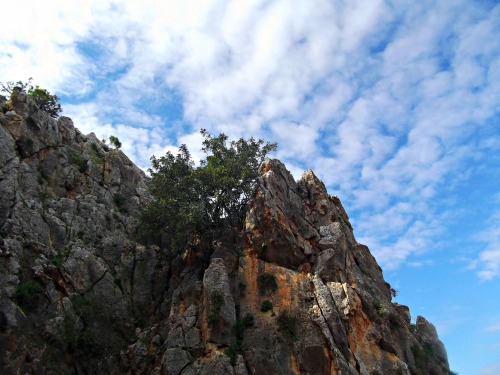
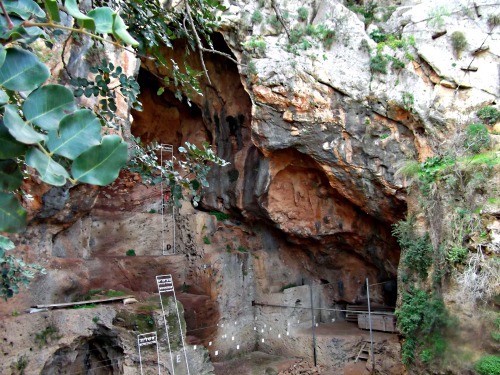
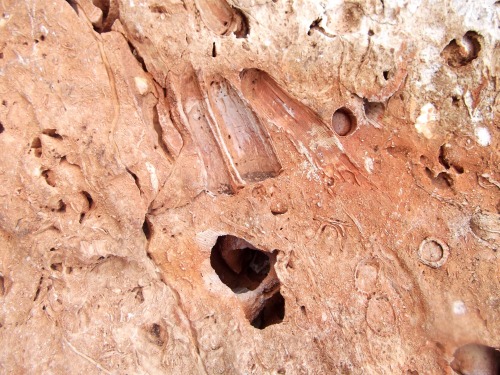
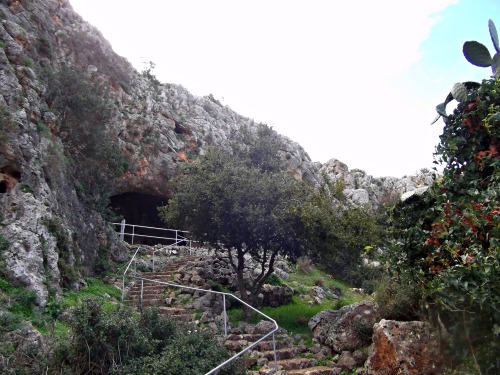


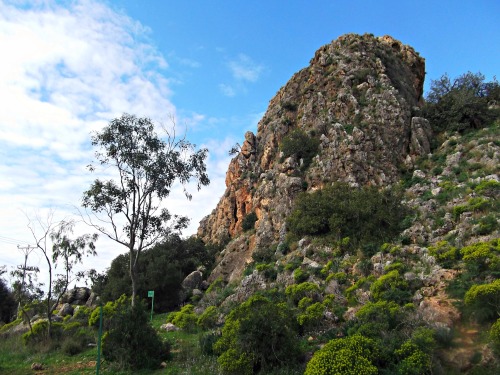

[…] pieces their own identity. Another cave that I remember being lit with coloured lighting was the Carmel Caves, and at last I know […]
[…] to see more. I was treated to a nice sighting of a short-toed eagle flying past the train near Mount Carmel. It was my first time riding the new train line from Haifa to Bet Shean, a reconstruction of the […]
[…] waiting to take us to the next site. We drove over to Nachal Me’arot, to look at the famous Carmel Caves that contributed so much to prehistoric archaeology. Our resident prehistorian, Dr Nira […]